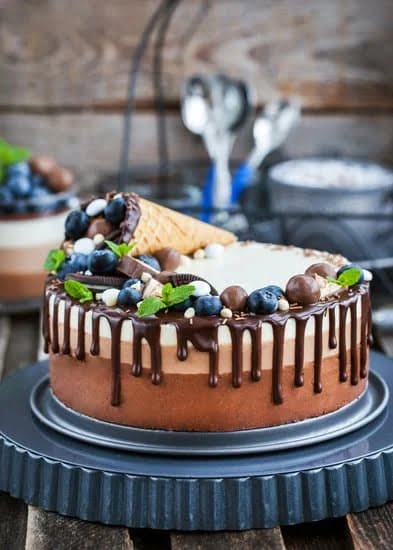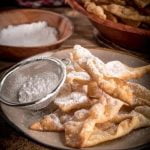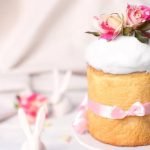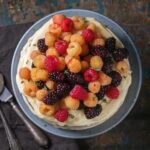Are you a baking enthusiast looking to learn how to decorate a naked cake? Naked cakes have gained considerable popularity in the world of baking and dessert trends.
These unique, rustic-style cakes are known for their exposed layers and minimal frosting, creating a visually appealing and natural appearance. In this article, we will explore the concept of naked cakes and provide a comprehensive guide on how to decorate them with various elements such as fresh fruit, edible flowers, chocolate drizzles, and more.
Naked cakes have become increasingly popular due to their simple yet elegant aesthetic, making them a perfect choice for weddings, birthdays, or any special celebration. The concept of naked cakes revolves around showcasing the natural beauty of the cake layers and fillings without completely covering them with frosting. As a result, these cakes offer a delightful blend of flavors and textures while also providing a visually stunning presentation.
When it comes to decorating a naked cake, there are various factors to consider, starting with choosing the right base cake flavor and type that serves as the foundation for the decoration process. Additionally, preparing the ideal frosting plays a crucial role in achieving the desired look and taste of a naked cake. Throughout this article, we will delve into each step of decorating a naked cake in detail so that you can master this beautiful culinary art form.
Choosing the Right Naked Cake Base
When it comes to decorating a naked cake, the first and most crucial step is choosing the right cake base. The flavor and type of cake you select will set the foundation for the entire decorating process, so it’s essential to make the best choice. Below are some tips for selecting the perfect cake flavor and type to use as the base for decorating a naked cake:
1. Consider the Occasion: Think about the event or occasion for which you are making the naked cake. For example, a light and refreshing lemon flavor might be perfect for a summer wedding, while a rich chocolate cake would be more suitable for a decadent anniversary celebration.
2. Moisture Level: Pay attention to the moisture level of the cake. Since naked cakes are not heavily frosted, it’s important to choose a cake that will stay moist even when exposed. Options like carrot cake or red velvet are excellent choices due to their natural moisture content.
3. Texture and Density: The texture and density of the cake also play a significant role in its suitability as a naked cake base. A sturdy yet tender sponge cake holds up well without frosting, while a dense pound cake can provide a solid foundation for heavier fillings and decorations.
4. Flavor Combinations: If you plan on incorporating additional flavors through fillings or toppings, consider how they will complement the base cake flavor. For example, pairing a vanilla sponge with fresh berries or citrus curd can create a delightful balance of tastes.
By considering these tips when choosing your naked cake base, you can ensure that your decorated creation not only looks stunning but also tastes absolutely delicious. It sets you up for success before moving on to preparing amazing frosting and decoration techniques that will elevate your naked cakes to another level.
Preparing the Frosting
When it comes to decorating a naked cake, one of the most important elements is the frosting. The right frosting can enhance the flavor and texture of the cake while also adding to its visual appeal. There are several different types of frostings that work well with naked cakes, including Swiss meringue buttercream, cream cheese frosting, and even simple whipped cream.
To make a classic Swiss meringue buttercream, you will need egg whites, sugar, and unsalted butter. This type of frosting has a smooth and creamy texture that pairs beautifully with a wide variety of cake flavors.
Cream cheese frosting, on the other hand, adds a tangy and slightly savory element to the cake and works particularly well with red velvet or carrot cakes. For a lighter option, whipped cream can be sweetened and flavored with extracts such as vanilla or almond to create a fluffy and airy topping for your naked cake.
It’s important to consider the flavor profile and overall aesthetic of your naked cake when selecting the frosting. Whether you’re aiming for something rich and indulgent or light and fresh, the type of frosting you choose will greatly impact the final result. Experimenting with different flavors and textures can lead to stunning combinations that will elevate your naked cake to new heights.
| Type of Frosting | Flavor Profile |
|---|---|
| Swiss Meringue Buttercream | Smooth, creamy, versatile |
| Cream Cheese Frosting | Tangy, slightly savory |
| Whipped Cream | Light, airy, fresh |
By carefully considering the flavor profile and texture of your chosen frosting, you can create a delightful complement to your naked cake that will leave everyone impressed. In the next section, we will delve into detailed instructions on how to properly level, fill, and stack the cake layers in order to achieve an aesthetically pleasing base for your decadent frosting creation.
Leveling and Filling the Layers
When it comes to decorating a naked cake, the process begins with selecting and preparing the perfect base. Once you have chosen the right cake flavor and type, it’s essential to focus on the next step: leveling, filling, and stacking the layers. This crucial phase ensures that your naked cake not only looks visually appealing but also promises a delicious experience with every bite.
To start, it’s important to ensure that your cake layers are evenly leveled for a polished and professional appearance. This can be achieved by using a serrated knife or a cake leveler to carefully trim off any domed or uneven tops. Once the layers are leveled, it’s time to focus on filling them with delectable frosting or other flavorful components such as fruit preserves or curds.
When filling the layers of your naked cake, be mindful of creating an even distribution of the filling to maintain balance in each slice. You can use a piping bag or offset spatula to spread and layer the filling evenly across each tier. This step not only adds moisture and flavor to the cake but also contributes to its overall structural integrity when stacked.
After successfully leveling and filling the layers, carefully stack them one on top of another while ensuring that they are aligned both vertically and horizontally. As you build each tier, press gently down on them to secure their placement and eliminate any air gaps. This will result in a sturdy and well-constructed naked cake that serves as an ideal canvas for further decoration.
Now that you have mastered the art of leveling, filling, and stacking the layers of your naked cake, you are ready to move on to adding decorative elements such as fresh fruit, edible flowers, chocolate drizzles, caramel sauces, or any other finishing touches that will elevate its visual appeal and taste profile.
Decorating With Fresh Fruit
Naked cakes have become increasingly popular in the world of baking and dessert trends. These cakes are characterized by their minimalist, unfrosted appearance, allowing the natural beauty of the cake layers and fillings to shine through.
When it comes to decorating a naked cake, one of the most popular choices is using fresh fruit to add color, flavor, and a natural touch. In this section, we will explore creative ideas and techniques for incorporating fresh fruits into the decoration of a naked cake.
When considering how to decorate a naked cake with fresh fruit, it’s important to choose fruits that are in season and at their peak ripeness. Berries such as strawberries, blueberries, raspberries, and blackberries are excellent choices due to their vibrant colors and sweet-tart flavors. Sliced kiwi, peaches, citrus segments, and pomegranate arils can also add a beautiful pop of color and freshness to a naked cake.
One creative way to incorporate fresh fruit into the decoration of a naked cake is by creating a cascading effect with the fruit. Start by placing larger pieces of fruit on top of the cake or around the edges, then allow smaller pieces or individual berries to cascade down the sides for an elegant and whimsical look.
Another technique is to arrange sliced fruit in a circular pattern on top of the cake or along the edges of each layer for a more uniform and polished appearance.
| Fruit | Season | Recommended Technique |
|---|---|---|
| Berries (strawberries, blueberries, raspberries) | Spring/Summer | Cascading effect or circular pattern |
| Kiwi, peaches, citrus segments | Summer/Fall | Cascading effect for kiwi and circular pattern for peaches/citrus segments |
| Pomegranate arils | Fall/Winter | Cascading effect on top or sprinkled between layers |
Adding Edible Flowers and Herbs
Decorating a naked cake with edible flowers and herbs can take its appearance and flavor to the next level. Not only do these natural elements add a beautiful pop of color, but they also introduce unique and subtle flavors that can complement the cake itself. When it comes to selecting and using edible flowers and herbs for decorating a naked cake, there are a few important tips to keep in mind.
Choosing the Right Flowers and Herbs
When selecting flowers for decorating a naked cake, it’s crucial to ensure that they are indeed edible and safe for consumption. Some popular choices include roses, violets, lavender, pansies, and daisies. It’s important to avoid flowers that have been treated with pesticides or other chemicals. As for herbs, options like rosemary, mint, basil, thyme, and chamomile can add delightful hints of freshness and flavor to the cake.
Preparing Edible Flowers and Herbs
Before using edible flowers and herbs on a naked cake, it’s essential to properly clean them to remove any dirt or debris. Gently rinse them with water and allow them to air dry completely before placing them on the cake. For larger flowers or herbs with thicker stems, it’s advisable to carefully trim them so that they can be easily incorporated into the cake decoration.
Arranging Flowers and Herbs
When adding edible flowers and herbs to decorate a naked cake, consider how you want to arrange them for the most aesthetically pleasing presentation. Whether you opt for a scattered look with a variety of flowers and herbs placed throughout the layers or prefer a more organized pattern along the edges or top of the cake is entirely up to your personal style preference.
Keep in mind that less is often more when it comes to using these natural adornments – a few carefully placed blooms or sprigs can make a striking impact without overpowering the simplicity of the naked cake.
Incorporating edible flowers and herbs into the decoration of a naked cake creates an enchanting visual appeal while infusing subtle flavors that elevate the overall taste experience. By following these tips for selecting, preparing, arranging, and incorporating these natural elements into your naked cake design, you can create a stunning dessert that will impress any crowd.
Using Chocolate and Caramel Drizzles
Choosing the Right Chocolate and Caramel
When it comes to decorating a naked cake with chocolate and caramel drizzles, it’s essential to choose high-quality ingredients. Opt for premium dark or milk chocolate for the richest flavor, and consider the viscosity of the caramel to ensure it drizzles smoothly over the cake. It’s also important to taste-test these components beforehand to balance sweetness and bitterness if necessary.
Techniques for Drizzling
The key to achieving a professional-looking finish with chocolate and caramel drizzles is mastering the technique. For chocolate, melt it in a heatproof bowl over simmering water or in short bursts in the microwave, then use a spoon or piping bag to gently pour it over the top of the cake. To create an elegant effect with caramel, warm it slightly and use a spoon or squeeze bottle to create thin, delicate lines across the surface of the cake.
Combining Chocolate and Caramel Artfully
For a truly indulgent presentation, consider combining both chocolate and caramel drizzles on your naked cake. You can create patterns or swirls by alternating between pouring each component over the top of the cake. Experiment with different designs, such as crisscross patterns or concentric circles, to add visual interest while showcasing both flavors beautifully.
By adding these final decadent touches to your naked cake, you’ll elevate its appeal from simple and rustic to sophisticated and luxurious. The interplay of rich chocolate and luscious caramel will not only enhance the flavor but also create an eye-catching centerpiece that is sure to impress at any special occasion.
Remember that when using these drizzles on your cakes it tests them before laying them out on ingredients,enjoy experimenting with different techniques until you find what works best for you.
Finishing Touches and Presentation
In conclusion, decorating a naked cake is an art form that allows for creativity and personalization, making it a popular choice for various occasions. From selecting the right cake base to preparing the ideal frosting and incorporating fresh fruits, edible flowers, and chocolate/caramel drizzles, there are numerous ways to enhance the visual appeal and flavor profile of a naked cake. The key lies in attention to detail and thoughtful presentation.
Once the naked cake has been decorated with all the desired elements, it’s important to focus on the finishing touches and presentation. Whether it’s adding a final sprinkle of powdered sugar, arranging additional fruit or herb garnishes, or carefully drizzling chocolate or caramel over the top, these last steps can truly elevate the overall look of the cake. Additionally, considering styling and serving suggestions for any occasion is essential in creating a memorable dessert experience for guests.
Overall, learning how to decorate a naked cake opens up opportunities for bakers to showcase their skills and imagination. By following the tips and techniques outlined in this article, individuals can create stunning naked cakes that are not only visually stunning but also incredibly delicious. Whether it’s for a casual gathering or a special celebration, a well-decorated naked cake is sure to impress and delight anyone who has the pleasure of enjoying it.
Frequently Asked Questions
How Do You Make a Plain Cake Look Better?
A plain cake can be made to look better by adding a simple dusting of powdered sugar or cocoa powder on top. You can also use fresh fruits, edible flowers, or a drizzle of chocolate or caramel sauce for an elegant touch.
How to Decorate Cake Without Cake Stand?
Decorating a cake without a cake stand is still possible by placing the cake on a large plate or serving platter. You can then use items like fresh flowers, fruits, or even cookie cutters as stencils to create beautiful designs on top of the cake.
How to Decorate a Cake With Chocolates?
Decorating a cake with chocolates can be done by using chocolate shavings, curls, or even whole pieces of chocolate as toppings. You can also melt chocolate and drizzle it over the cake for a decorative and delicious finish. Another option is to arrange chocolate candies around the edges of the cake for a visually appealing border.

Welcome to our cake decorating blog! My name is Destiny Flores, and I am the proud owner of a cake decorating business named Cake Karma. Our mission is to provide delicious, beautiful cakes for all occasions. We specialize in creating custom cakes that are tailored specifically to each customer’s individual needs and tastes.





